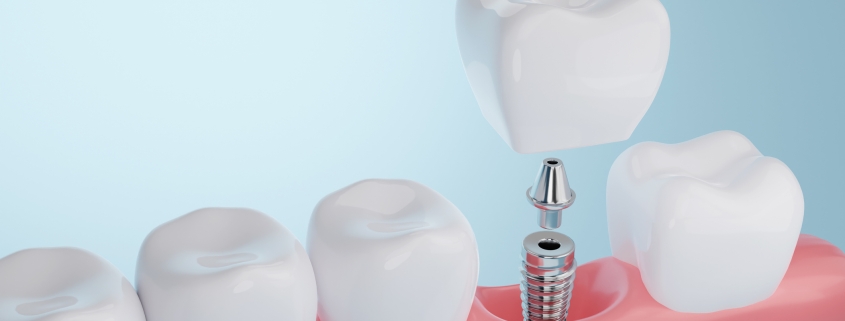The Evolution of Implant Dentistry
Implant dentistry has undergone remarkable advancements since its inception, evolving into a cornerstone of modern restorative dentistry. From early experimental designs to today’s highly sophisticated techniques and materials, dental implants offer predictable, long-lasting solutions for tooth replacement. This article explores the history of implant dentistry, examines current trends, and provides insight into future directions shaping the field.
The History of Implant Dentistry
The journey of dental implants dates back thousands of years, with rudimentary attempts at replacing missing teeth seen in ancient civilizations. The modern era of implant dentistry began in the 1950s, with the discovery of osseointegration by Dr. Per-Ingvar Brånemark. This breakthrough established titanium as the ideal material for implants, revolutionizing the field.
Key milestones include:
- 1970s–1980s: Introduction of standardized protocols for implant placement.
- 1990s: Advancements in surface technology to improve osseointegration.
- 2000s: Widespread adoption of computer-guided implant surgery.
Current Trends in Implant Dentistry
Modern implant dentistry integrates innovative materials, technologies, and techniques, enhancing precision, efficiency, and patient outcomes.
1. Advanced Materials
Titanium remains the gold standard for dental implants due to its biocompatibility and strength. However, recent innovations have introduced new materials:
- Zirconia Implants: Known for their aesthetic advantages and metal-free composition, zirconia implants are gaining popularity, especially for patients with metal sensitivities.
- Surface Modifications: Techniques like sandblasting, acid etching, and nano-coating improve the surface texture of implants, accelerating osseointegration.
2. Digital Implant Dentistry
Digital technology has transformed implant workflows, making procedures more predictable and less invasive:
- Cone-Beam Computed Tomography (CBCT): Provides 3D imaging for precise treatment planning and placement.
- CAD/CAM Technology: Enables the fabrication of custom implant components and restorations with high accuracy.
- Digital Impressions: Replace traditional methods, improving patient comfort and reducing error.
3. Immediate Loading Protocols
Immediate implant placement and loading allow patients to receive a temporary crown on the same day as surgery. This approach reduces treatment time and enhances patient satisfaction without compromising success rates.
4. All-on-4 and Full-Arch Solutions
The All-on-4 concept, which uses four strategically placed implants to support a full arch of teeth, has revolutionized care for edentulous patients. This technique minimizes the need for bone grafting and offers a cost-effective alternative to traditional full-arch rehabilitation.
5. Minimally Invasive Techniques
Advancements in surgical techniques have led to less invasive procedures:
- Flapless Surgery: Reduces post-operative discomfort and accelerates healing.
- Piezoelectric Surgery: Uses ultrasonic vibrations to perform precise bone modifications, preserving soft tissue.
Future Directions in Implant Dentistry
The future of implant dentistry is driven by innovation in biomaterials, regenerative medicine, and artificial intelligence (AI), promising even greater success and accessibility.
1. Smart Implants
Smart implants equipped with sensors may provide real-time data on:
- Osseointegration status.
- Early detection of peri-implantitis or mechanical stress. This technology could enable proactive maintenance and long-term success.
2. Bioprinting and Tissue Engineering
Bioprinting is an emerging field with the potential to regenerate bone and soft tissue for implant support. Techniques under exploration include:
- Bone Scaffolds: 3D-printed structures infused with growth factors to stimulate bone regeneration.
- Gingival Regeneration: Bioengineered solutions to restore gum tissue aesthetics and health around implants.
3. Artificial Intelligence in Treatment Planning
AI is poised to play a significant role in implant dentistry:
- Predictive Analytics: AI can analyze patient data to predict treatment outcomes and recommend optimal protocols.
- Automated Surgical Planning: AI-driven software could enhance the precision of implant placement and reduce human error.
4. Nanotechnology
Nanotechnology may further enhance implant surfaces, promoting faster and more robust osseointegration. Nanostructures can also deliver antimicrobial properties, reducing the risk of infections.
5. Patient-Centered Approaches
Future trends will prioritize personalized care:
- Customized Implants: Tailored designs to match individual anatomy and aesthetics.
- Affordable Options: Innovations aimed at reducing costs and expanding access to implant therapy.
Challenges and Considerations
While the advancements in implant dentistry are promising, certain challenges remain:
- Cost: Implant procedures can be expensive, limiting access for some patients.
- Peri-Implant Diseases: Conditions like peri-implantitis pose risks to long-term implant success.
- Skill Development: The adoption of new technologies requires continuous training and expertise

